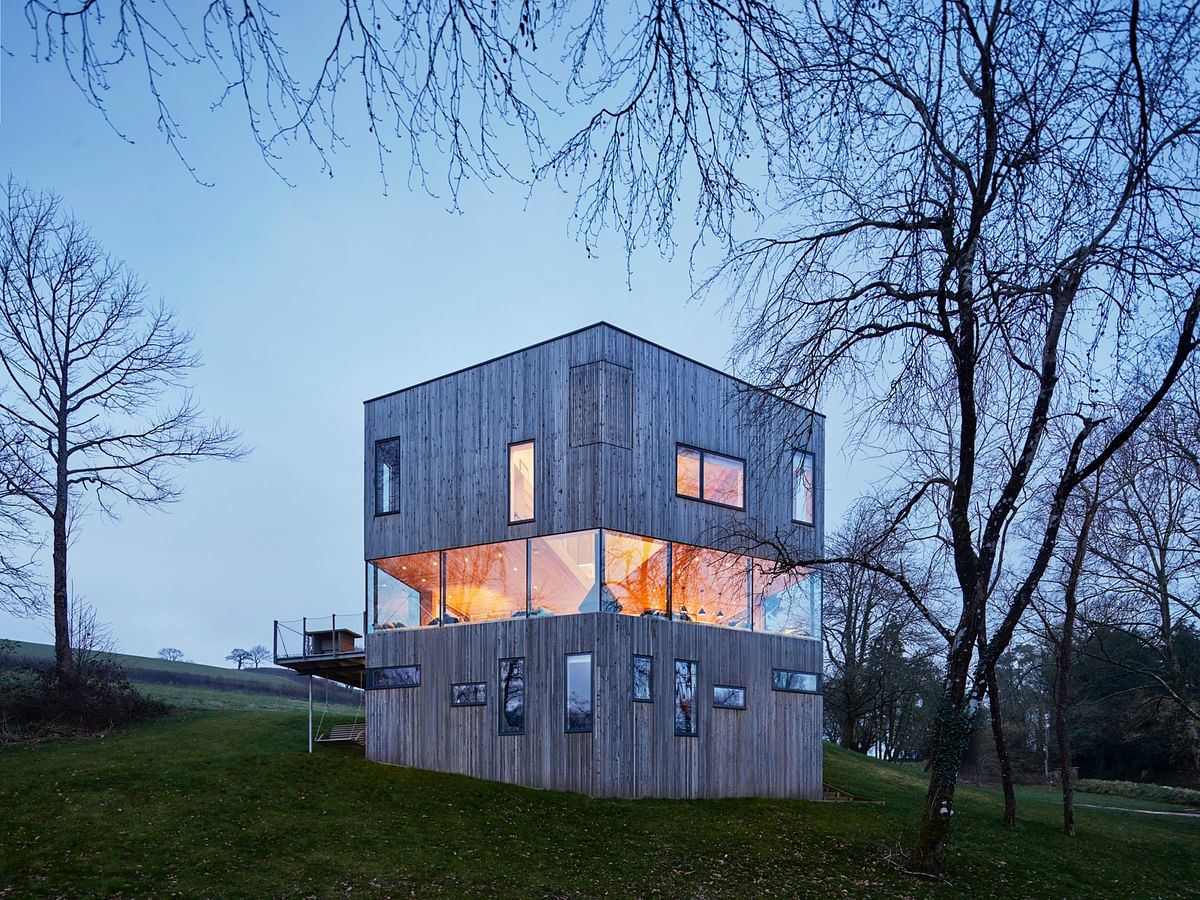
Six projects shortlisted for 2019 RIBA Stephen Lawrence Prize
By Justine Testado|
Friday, Jul 26, 2019
Related
Following the announcement of the Stirling Prize shortlist, RIBA revealed the projects still in the running for winning the 2019 Stephen Lawrence Prize, which distinguishes notable architectural projects with a construction budget of less than £1 million. The Marco Goldschmied Foundation established the yearly prize in 1998, in memory of aspiring young architect Stephen Lawrence.
The winner of the 2019 Stephen Lawrence Prize will be announced during the RIBA Stirling Prize ceremony at the Roundhouse in London on October 8.
Check out the shortlist below.
Highgate Bowl, London, by HASA Architects


Excerpt from jury report: “‘If we create it, they will come’ said the client with a quiet confidence of someone who, after a number of disappointments and false starts on this magical site has realized that something very special is in the offing.The architects have made some highly effective, very low cost small-scale interventions to transform a derelict horticultural glasshouse at Highgate Bowl near the top of HighgateHill in North London, bringing this forgotten piece of the city back into public use as a community garden and versatile event space. [...] The brief for the project has been created organically with both the client and the architect ‘feeling their way into it’. Sensitivity and lightness of touch is evident throughout much of the architectural installation –much has been achieved with relatively small means. It is also clear that, although we have reached a delightful staging post, this project will continue to evolve and grow.”
South London House, London, by Jonathan Pile Architect
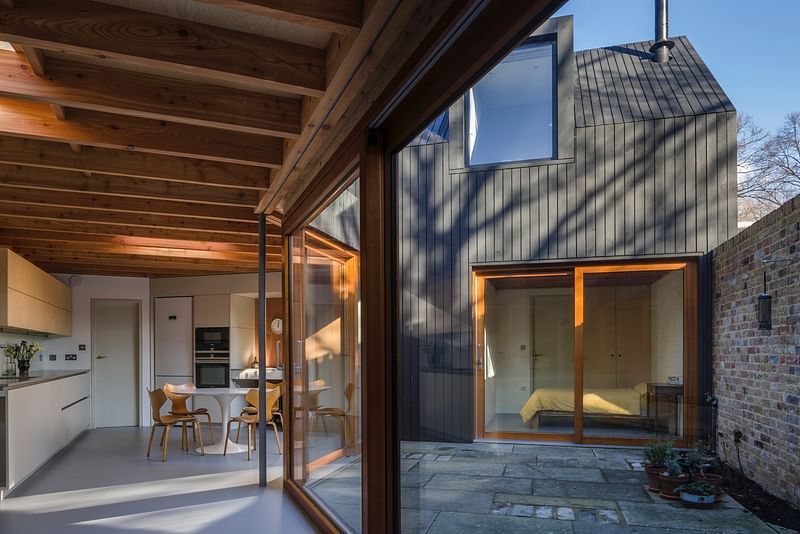

Excerpt from jury report: “This courtyard house offers a new typology for reusing complex and underutilised urban sites. It makes the most of the site and responds sensitively to the Grade I Listed St Paul’s Church through its scale and use of black-stained timber, which references earlier timber-clad houses prevalent in Deptford in the 17th and 18th Centuries. The timber sits modestly above the original brick wall that borders the site from the street. The building’s layout capitalises on the irregularly shaped site through an ingenious arrangement of rectilinear spaces for the bedrooms and bathrooms. These are united by irregular living space arranged around a courtyard. Glazing from this space provides a point of reference as you move through the house, and maximises the stunning views beyond the brick wall to St Paul’s. The use of exposed timber, particularly in the top-lit living space, creates a warm, welcoming, unique family home.”
Pocket House, London, by Tikari Works
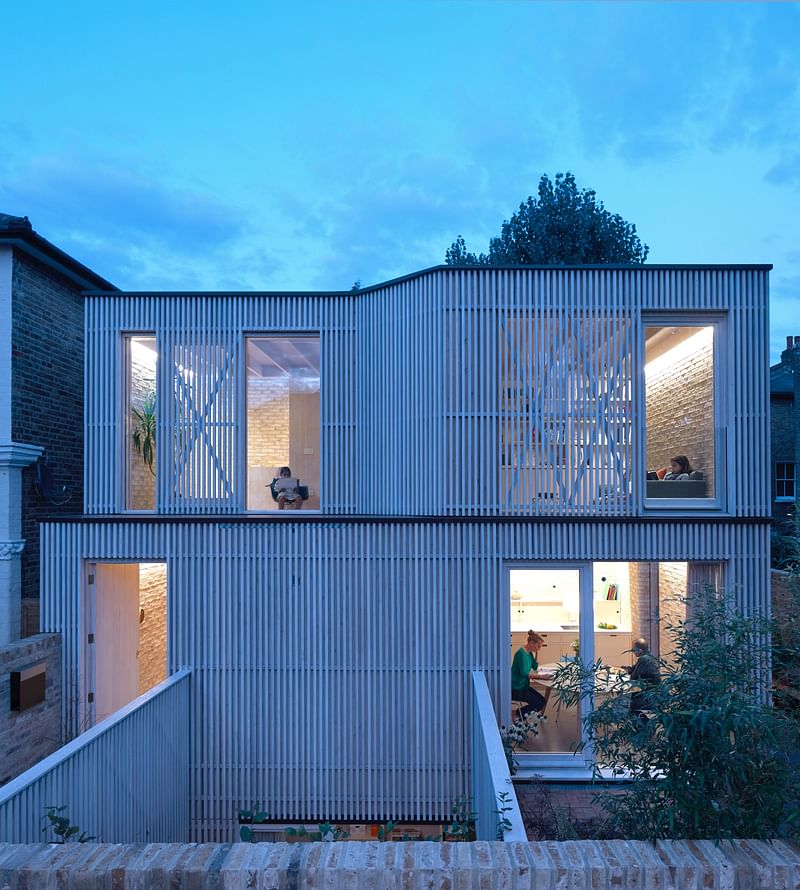
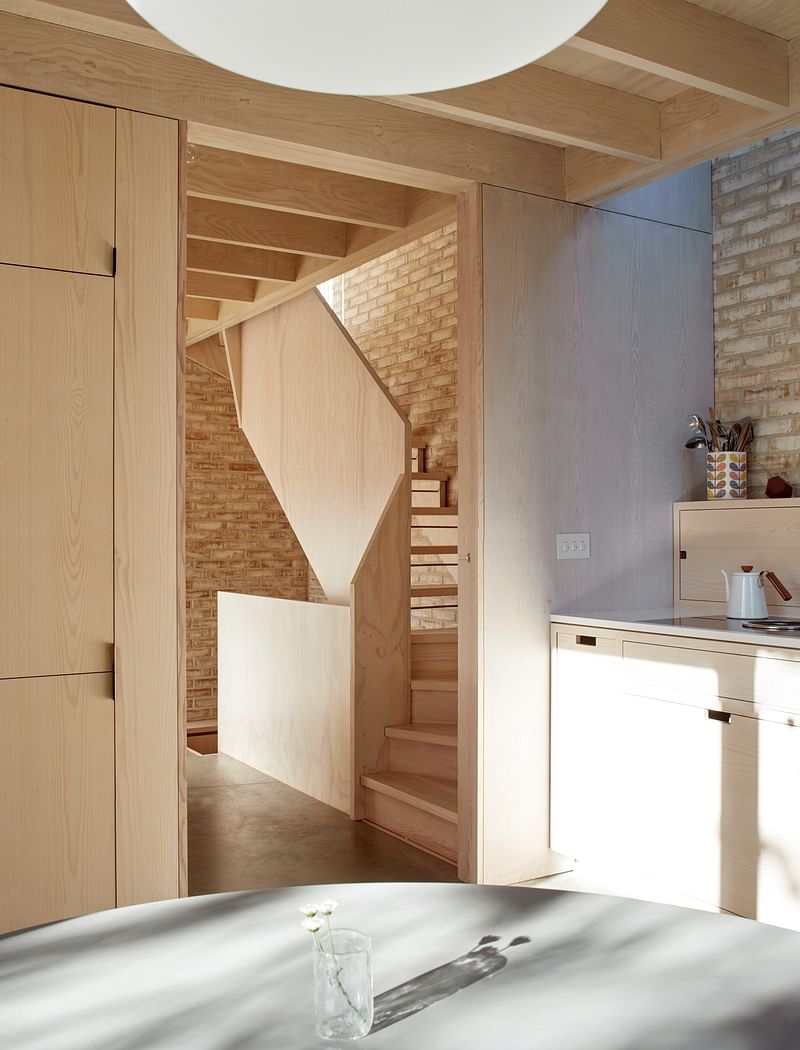
Excerpt from jury report: “This project transforms an underutilised site containing garages into a family home. It successfully deals with a number of constraints, including a restriction on height and the need to maintain neighbours’ privacy. This has been achieved by locating part of the house below ground and through the efficient use of space, including significant built-in storage elements that become architectural features in themselves, adding to the unique character of the house.A high level of quality and excellent value for money have been achieved on this project, which is no mean feat. A concise material palette of brick, timber and concrete is beautifully finished and left exposed throughout the building, creating a calming sense of refuge from the outside world. The quality of the joinery is impressive, and the architect has demonstrated a rigorous control over cost by using materials to their full potential –for example, designing out all secondary steel work for the timber stairs. The refined detailing creates an elegant appearance. It is apparent that every interface has been carefully considered by the architect.”
Black House, Isle of Skye, by Dualchas Architects
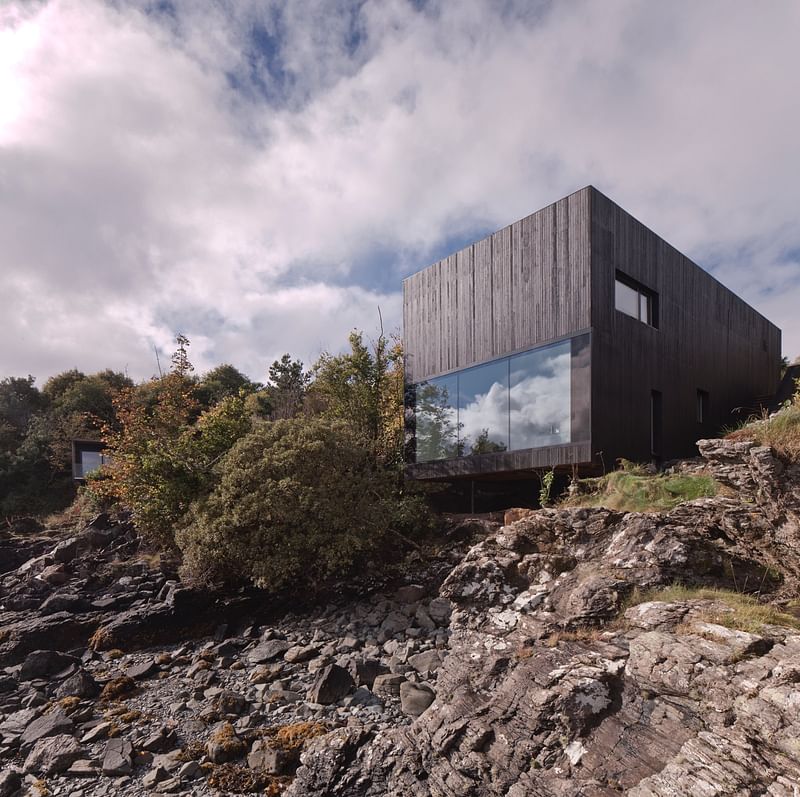

Jury report: “The decision of the architects to locate this black timbered house within a dipping rocky depression close to the water’s edge has enabled it to engage less directly with the nearby road, have a reduced profile in the landscape and develop a stronger connection with the sea.The fully glazed end wall of the main living space frames a spectacular view across the water to rugged hills on the other side of the inlet, while reflected light provides an everchanging pattern across the white interior.There is a persuasive integrity to the rigorous use of pure rectangular forms, the strictly limited palette of colour and materials, and the consistent purity of minimalist detailing throughout, which enriched by the inclusion of the art and artefacts of the owners, have succeeded in creating a calm, inviting and exceptional home.”
Cork House, Berkshire, by Matthew Barnett Howland with Dido Milne and Oliver Wilton

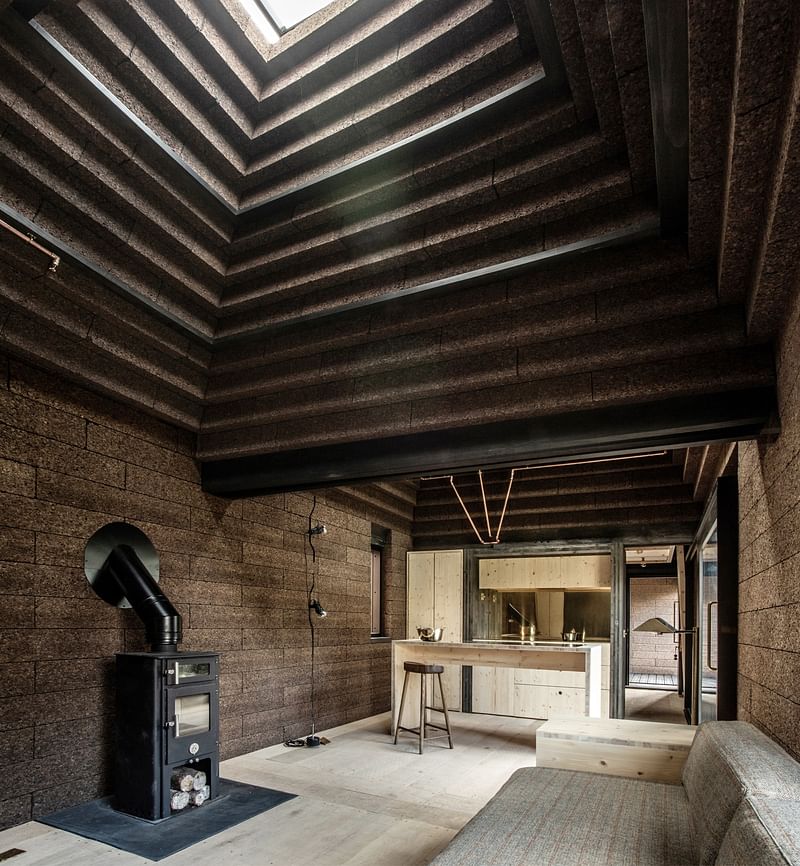
Excerpt from jury report: “Designed with immense attention to detail, Cork House is a structure of great ingenuity. Sited within the area of a Grade II Listed mill house dating back to the early nineteenth century, the Cork House beautifully reflects and respects the natural surroundings in form and construction. The ‘whole-life approach’ to sustainability truly sets this project apart. Designed, tested and developed in partnership with The Bartlett School of Architecture UCL, the collaborative teamhave delivered a project that is the first of its kind. An entirely cork construction, with solid structural cork walls and roof, the building emits next to zero carbon. The biogenic construction of prefabricated cork blocks and engineered timber is carbon negative at completion and has remarkably low whole life carbon. [...] The inventiveness lies within the structure’s ease of assembly. The whole house is ‘designed for disassembly’ and can be constructed by hand.”
The-Green-House, Tiverton, by David Sheppard Architects

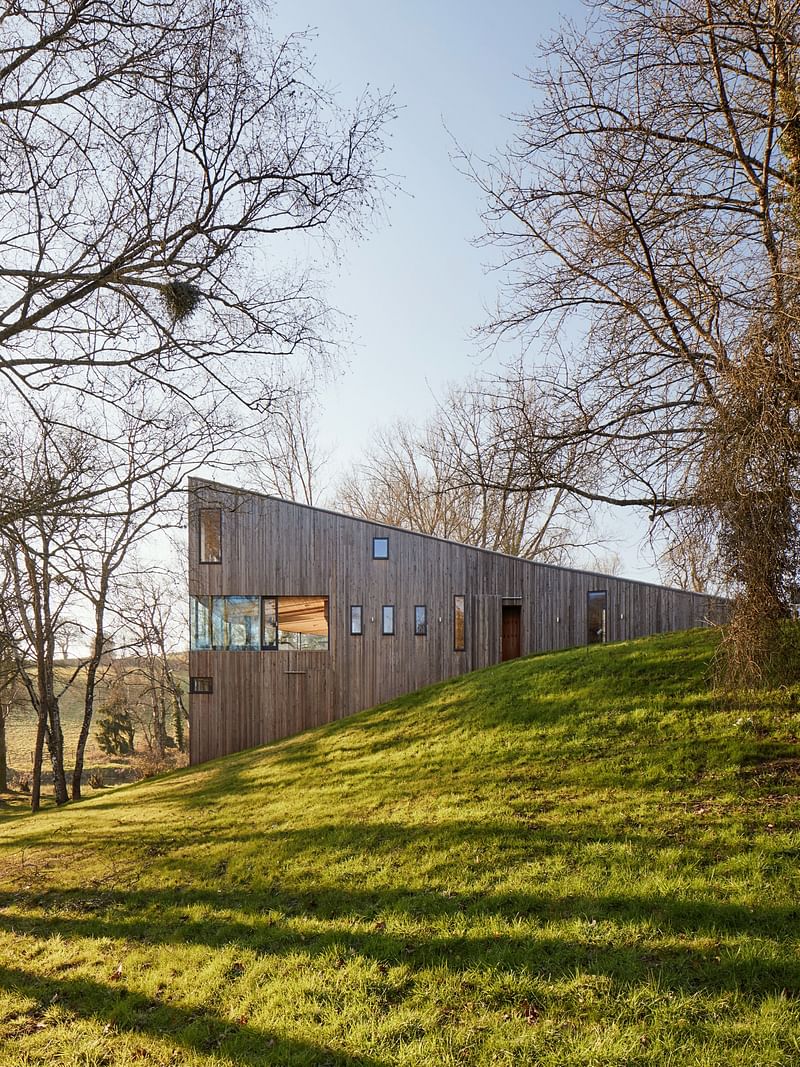
Excerpt from jury report: “This is a crafted building created by an intuitive mind. It appears on the landscape as an organism that hasmoulded itself to its environment. It rests upon the topography to dramatic effect. This is a wholly original house. The first sight of the building is of a triangular wedge placed on a very steep slope, on approach the dramatic green roof sweeps down seemingly to offer a welcoming hand. A discreet opening on the side of the larch clad walls allows entry into an unexpected dramatic high space within, with vistas and shapes in many directions. The space draws you in.This main living space of the house has slid down the hill to reach for the trees, where the catkins brushes against the glass. This piano noble has wrap round full height glazing with deep window seats perched at branch level looking down onto the swimming ponds below and out across the distant fields.”

Share
0 Comments
Comment as :